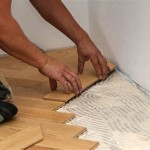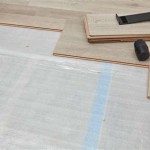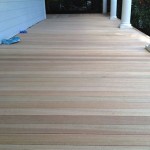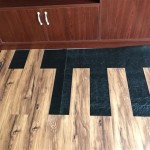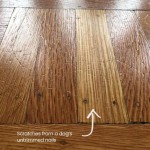Underlayment for Vinyl Plank Flooring on Concrete: A Comprehensive Guide
Installing vinyl plank flooring over concrete is a popular choice for homeowners due to its durability, water resistance, and aesthetic appeal. However, a successful installation hinges on proper preparation, and a crucial component of that preparation is selecting and installing the correct underlayment. Underlayment provides a vital layer between the concrete subfloor and the vinyl planks, contributing to the floor's longevity, comfort, and overall performance. While various underlayment options exist, understanding their features, benefits, and suitability for different concrete conditions is paramount for a satisfactory outcome. This article aims to provide a detailed overview of underlayment for vinyl plank flooring on concrete, covering key considerations and available options at retailers like The Home Depot.
Concrete subfloors present unique challenges for flooring installations. Unlike wood subfloors, concrete is inherently hard and rigid. It also tends to be cold and can transmit moisture from the ground. These factors necessitate the use of underlayment to address potential issues such as unevenness, impact noise, thermal insulation, and moisture mitigation. Without proper underlayment, vinyl plank flooring can be susceptible to damage, discomfort, and premature wear.
The selection of underlayment is further complicated by the variety of vinyl plank flooring available. Different types of vinyl plank, such as luxury vinyl plank (LVP) and standard vinyl plank, may have varying requirements for underlayment. Some vinyl planks come with pre-attached underlayment, while others require separate installation. The manufacturer's recommendations should always be the primary guide in determining the appropriate underlayment.
It’s also important to note that The Home Depot, being a major retailer of flooring and related materials, offers a wide range of underlayment options specifically designed for vinyl plank flooring on concrete. Their selection typically includes products from various manufacturers, offering different thicknesses, materials, and performance characteristics. Consulting with a sales associate at The Home Depot can provide valuable insights into the best choices for a particular project.
Key Point 1: Addressing Concrete Subfloor Imperfections
Concrete subfloors are rarely perfectly level. Cracks, minor imperfections, and variations in height are common. These imperfections, if left unaddressed, can telegraph through the vinyl plank flooring, creating an uneven surface and potentially damaging the planks over time. Underlayment provides a cushioning layer that can help to mitigate these imperfections.
For minor irregularities, a thin underlayment may suffice. However, for more significant unevenness, a thicker underlayment or a specialized leveling compound may be necessary. Self-leveling concrete, available at The Home Depot, can be poured over the existing concrete to create a perfectly level surface before installing the underlayment and vinyl plank flooring.
Underlayment with good compression resistance is also vital. This characteristic ensures that the underlayment can withstand the weight of furniture and foot traffic without collapsing or becoming permanently compressed. Compression can be measured with a PSI (pounds per square inch) rating. A higher PSI resistance indicates greater compression resistance. Selecting an underlayment with appropriate PSI resistance is crucial for maintaining the integrity of the flooring system.
Some underlayments are specifically designed to bridge small cracks in the concrete. These underlayments often incorporate a reinforcing layer that helps to prevent the cracks from spreading through the vinyl plank flooring. While underlayment can help to bridge small cracks, it is essential to address any significant structural cracks in the concrete before installing the flooring.
Beyond leveling, underlayment can prevent the vinyl plank from directly adhering to the concrete in some spots while being loose in others. This uneven contact can lead to stress on the vinyl, causing it to crack or separate over time. A continuous, well-bonded underlayment provides a uniform surface for the vinyl plank to adhere to, promoting long-term stability.
Key Point 2: Moisture Mitigation and Thermal Insulation
Concrete, being porous, can absorb moisture from the ground. This moisture can then migrate to the surface, potentially damaging the vinyl plank flooring. Excessive moisture can lead to mold and mildew growth, causing health problems and further compromising the integrity of the flooring. Therefore, moisture mitigation is a critical consideration when installing vinyl plank flooring over concrete.
Many underlayments are designed with a moisture barrier to prevent moisture from reaching the vinyl plank flooring. These moisture barriers are typically made of polyethylene film or other waterproof materials. The effectiveness of the moisture barrier is often measured by its perm rating, which indicates the rate at which moisture vapor can pass through the material. A lower perm rating indicates a better moisture barrier.
In addition to moisture barriers, some underlayments incorporate antimicrobial properties to further inhibit mold and mildew growth. These antimicrobial agents can help to prevent the development of odor and discoloration, contributing to a healthier indoor environment. The Home Depot often carries underlayments boasting antimicrobial protection, clarifying the added benefit in their product descriptions.
Furthermore, concrete can conduct heat away from the flooring surface, making the floor feel cold, especially during winter months. Underlayment provides a layer of thermal insulation, helping to keep the floor warmer and more comfortable. The insulation value of underlayment is typically measured by its R-value. A higher R-value indicates better insulation.
Some underlayments are specifically designed for use with radiant floor heating systems. These underlayments have a low thermal resistance, allowing heat to pass through more efficiently. Using the proper underlayment with radiant floor heating ensures that the system operates effectively and efficiently.
Before installing underlayment, it is crucial to test the concrete for moisture levels. This can be done using a moisture meter or a calcium chloride test. If the moisture levels are too high, it may be necessary to apply a moisture mitigation system before installing the underlayment. These systems often involve applying a waterproof coating to the concrete surface to prevent moisture from migrating upwards.
Key Point 3: Sound Reduction and Impact Absorption
Concrete floors tend to transmit sound easily, especially impact noise such as footsteps or dropped objects. This can be a significant concern in multi-story buildings or in homes where noise reduction is desired. Underlayment can provide a significant reduction in impact noise, creating a quieter and more comfortable living environment.
The sound reduction properties of underlayment are typically measured by two ratings: Impact Insulation Class (IIC) and Sound Transmission Class (STC). IIC measures the reduction of impact noise, while STC measures the reduction of airborne noise. A higher IIC and STC rating indicates better sound reduction.
Many underlayments are designed with a foam core or other sound-absorbing materials to dampen impact noise. These materials help to cushion footsteps and reduce the transmission of sound through the floor. The Home Depot often carries a variety of underlayments, with the sound reduction ratings clearly displayed on the packaging or product descriptions.
Beyond sound reduction, underlayment also provides impact absorption. This helps to cushion the floor and reduce the stress on the vinyl plank flooring, extending its lifespan. Walking on a floor with good impact absorption is also more comfortable and less tiring.
The density and thickness of the underlayment play a crucial role in its sound reduction and impact absorption properties. Denser and thicker underlayments generally provide better performance in these areas. However, it is essential to consider the manufacturer's recommendations for the specific vinyl plank flooring being used, as overly thick underlayment may not be compatible with some flooring systems.
Ultimately, the choice of underlayment is a balance of cost, performance, and ease of installation. While higher-end underlayments may offer superior sound reduction and moisture mitigation, they may also be more expensive and more difficult to install. Considering the specific needs and budget of the project is paramount for making an informed decision.
Finally, remember that proper installation is just as important as selecting the right underlayment. Following the manufacturer's instructions carefully is crucial for ensuring the underlayment performs as intended and for maintaining the warranty on the vinyl plank flooring. This includes properly preparing the concrete subfloor, ensuring the underlayment is securely attached, and using the correct tools and techniques. Seek professional assistance if you are unsure about any aspect of the installation process. Retailers like The Home Depot may also provide installation services, offering a comprehensive solution.

How To Install Vinyl Plank Flooring The Home Depot

Underlayment For Vinyl Plank Flooring Introducing Soundbuffer

Quietwalk 360 Sq Ft Vinyl Sound Reflecting Flooring Underlayment Damaged

Quietwalk 360 Sq Ft Vinyl Sound Reflecting Flooring Underlayment Damaged

Lvp Flooring Installation Over Concrete Subfloor Full Instructional Builds By Maz Flooret

Home Decorators Collection Palenque Park 12 Mil X 7 In W 48 L Waterproof Lock Luxury Vinyl Plank Flooring 23 8 Sq Ft Case

Tips For Installing Vinyl Plank Over Concrete Floors Lemon Thistle

How To Install Vinyl Plank Flooring The Home Depot

Underlay Options Onflooring

Tips For Installing Vinyl Plank Over Concrete Floors Lemon Thistle
Related Posts

